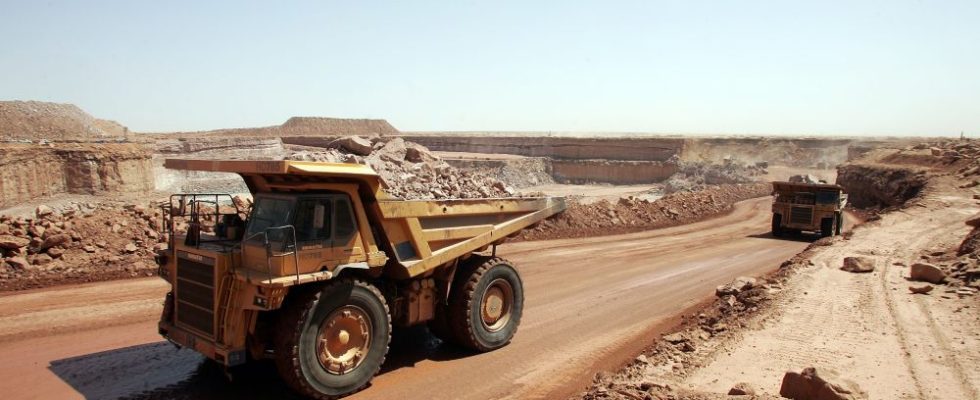Niger, one of the poorest countries in the world, is also one of the main exporters of uranium. Following the military coup that the country is currently experiencing, the debate on France’s energy independence has not failed to resurface. Sunday July 30, Emmanuel Macron assured that Paris “would not tolerate any attack against France and its interests” in this country, shaken by political instability since the overthrow of President Mohamed Bazoum.
What leave a threat to the energy security of French reactors? Each year, EDF buys about 7,000 tons of uranium, or nearly 10% of world demand, specifies the energy company. And if the company does not communicate on the distribution of these supplies, it ensures to ensure the variety of its geographical sources and its suppliers. “In concrete terms, this means that we are not dependent on any site, any company or any country to ensure our security of supply”, assures a spokesperson.
Four providers
Until the 1990s, France was even able to rely on its own reserves, before mining ceased in 2003, due to the depletion of deposits. Since then, the uranium used in French power plants has been exclusively of foreign origin. “EDF then implemented a dual diversification strategy: it no longer buys only from Orano [NDLR : entreprise contrôlée par l’Etat français et issue de la scission d’Areva] and it is supplied in several geographical areas, with a strong emphasis given to Central Asia, for cost reasons”, adds Teva Meyer, lecturer in geopolitics and specialist in civil nuclear power at the University of Haute-Alsace, in Mulhouse. Kazakhstan, Uzbekistan, Niger and Australia are today the four suppliers of uranium to the tricolor fleet. “When we talk about importing uranium from a country, we are often talking about reality of a single mine. It is therefore necessary to guard against any local problem, such as a technical breakdown or a flood for example, even beyond the geopolitical context”, underlines the researcher.
Globally, the main producers are Kazakhstan (45%), Namibia (12%) and Canada (10%). Niger accounts for only about 4%. But in 2022, it remained the second largest supplier of natural uranium to the European Union, with a market share of 25%.
Reserve stocks
If there is no fear for the supply of French reactors, it is also because the State has a substantial stock of fuels. The precise figures are not public, but specialists believe that we can currently rely on two years of reserves. To this stock is added fuel in other forms. So, the recent report of the National Assembly on France’s energy independence, underlined that in addition to conventional sources, the use of highly enriched uranium from the dismantling of nuclear weapons and the recycling of spent fuel offered an additional safety cushion.
“For EDF, the crisis in Niger does not pose a major problem in terms of supply. Given the fuel processing times, the company will have time to turn to other suppliers”, notes Teva Meyer. But the question arises differently for Orano, he underlines: “Orano produces around 5,000 tonnes of uranium per year, including 2,000 tonnes in Niger. Real industrial questions could then arise”. For the moment, the multinational ensures that the events in Niamey have “no short-term impact on Orano’s delivery capacities to France and its international customers”, and puts its dependence on Niger into perspective “thanks to a production and projects in development on […] four continents”.
Last May, the Nigerien government announced the signing, in Niamey, of a “global partnership agreement” to extend until 2040 the activity of the Somaïr uranium mine, a joint venture between Orano and the State, near the town of Arlit, in the north of the country. A honeymoon that is likely to darken.
